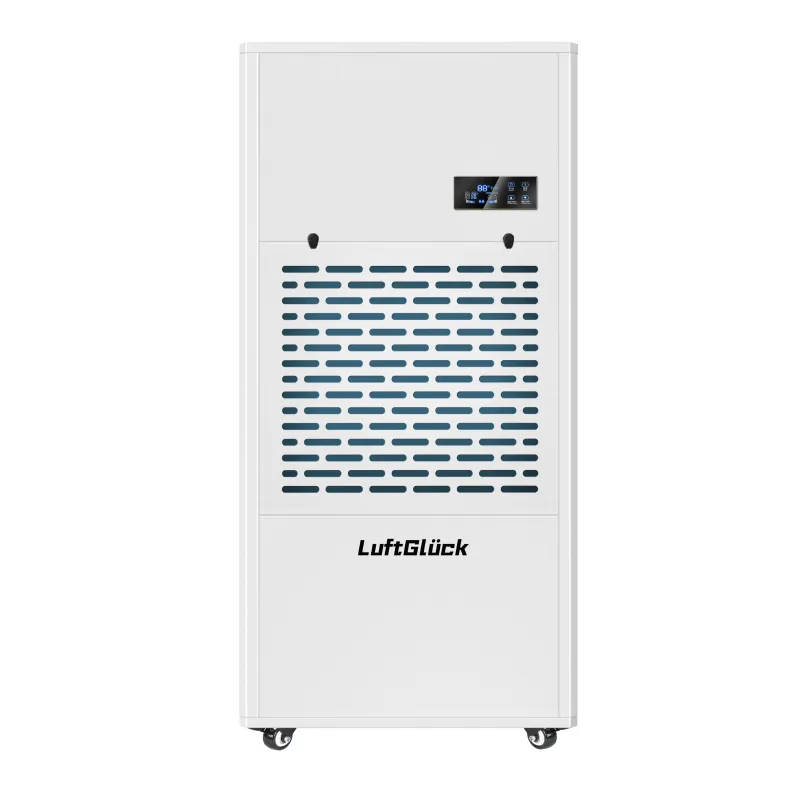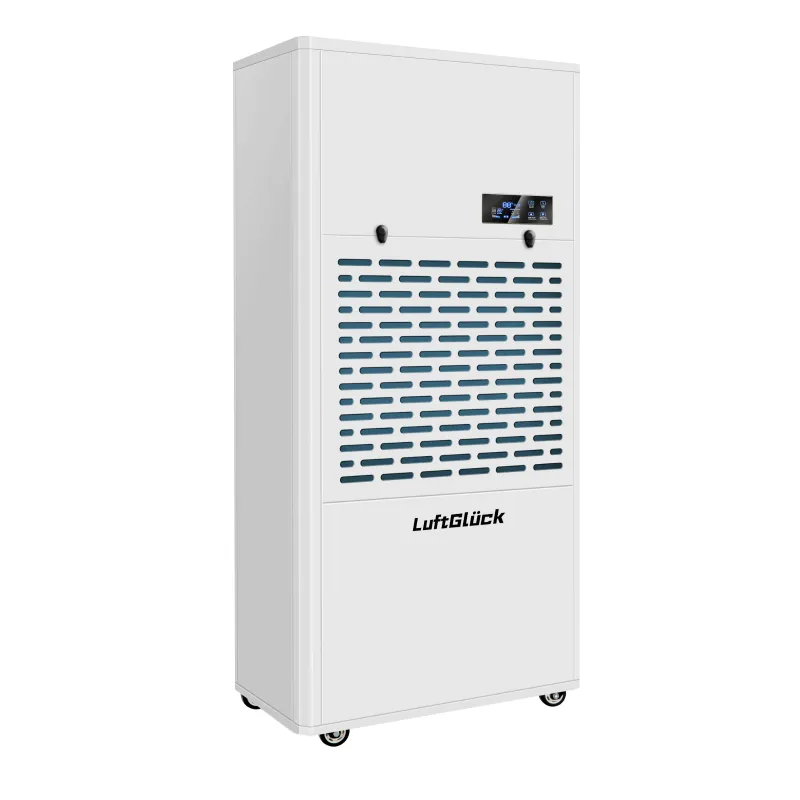Understanding the Impact of Industrial-Grade Dehumidification on Indoor Environments
Large indoor spaces present unique challenges when it comes to maintaining optimal air quality. A commercial dehumidifier serves as a powerful solution for controlling moisture levels in warehouses, manufacturing facilities, indoor pools, and other expansive areas. These sophisticated machines do far more than simply remove excess moisture – they play a crucial role in creating healthier, more comfortable environments while protecting valuable assets and infrastructure.
The relationship between humidity control and air quality is complex yet fundamental to the well-being of both occupants and structures. Commercial dehumidifiers utilize advanced technology to efficiently extract moisture from the air, helping to maintain ideal relative humidity levels between 30% and 50%. This precise control creates an environment where both people and equipment can function optimally.
Core Functions of Commercial Dehumidification Systems
Advanced Moisture Extraction Technology
A commercial dehumidifier operates through sophisticated moisture removal processes that far exceed the capabilities of residential units. These systems typically employ refrigeration technology or desiccant materials to extract water vapor from the air efficiently. The process begins as humid air is drawn into the unit, where it encounters cold coils or moisture-absorbing materials that condensate water vapor. This extracted moisture is then collected and drained away, while drier air is released back into the space.
Modern commercial dehumidifiers incorporate smart sensors and controls that continuously monitor humidity levels and adjust operation accordingly. This automated response ensures consistent performance while optimizing energy usage, making them ideal for maintaining large spaces where manual monitoring would be impractical.
Capacity and Coverage Considerations
The effectiveness of a commercial dehumidifier depends largely on its capacity to handle the volume of space it serves. Industrial-grade units are designed to process thousands of cubic feet of air per minute, making them suitable for warehouses, gymnasiums, and other expansive areas. These units can extract several hundred pints of moisture daily, far surpassing the capabilities of consumer-grade dehumidifiers.
When selecting a commercial dehumidifier, professionals consider factors such as room size, ceiling height, air exchange rates, and typical humidity loads. This careful calculation ensures the system can maintain desired humidity levels even during peak moisture conditions.
Health and Comfort Benefits
Respiratory Health Improvements
Properly controlled humidity levels through commercial dehumidification significantly impact respiratory health. When excess moisture is removed from the air, many common allergens and irritants become less problematic. Dust mites, which thrive in humid environments, find it harder to survive and reproduce. Additionally, reduced humidity levels help prevent the proliferation of airborne mold spores, which can trigger allergic reactions and respiratory issues.
Workers and occupants in spaces equipped with commercial dehumidifiers often report easier breathing and reduced instances of respiratory discomfort. This is particularly important in industrial settings where air quality directly affects worker productivity and well-being.
Comfort and Productivity Enhancement
A commercial dehumidifier creates an environment where the human body can more effectively regulate its temperature through natural perspiration. When humidity levels are properly controlled, people feel more comfortable even at slightly higher temperatures, which can lead to significant energy savings in cooling costs.
The improved comfort level translates directly to enhanced productivity in workplace settings. Employees are more likely to maintain focus and energy when working in an environment with optimal humidity levels, rather than dealing with the lethargy and discomfort associated with excessive moisture in the air.
Infrastructure Protection and Maintenance
Preventing Structural Damage
Excess moisture in large spaces can lead to significant structural issues over time. A commercial dehumidifier plays a crucial role in protecting building materials from moisture-related damage. By maintaining appropriate humidity levels, these systems help prevent wood rot, metal corrosion, and deterioration of other building materials.
The investment in proper dehumidification often pays for itself through reduced maintenance costs and extended building lifespan. This is particularly relevant in environments where moisture control is critical, such as storage facilities or manufacturing areas with sensitive equipment.
Equipment and Inventory Protection
Many businesses rely on commercial dehumidifiers to protect valuable inventory and equipment. In warehouses, proper humidity control prevents moisture damage to stored goods, particularly items sensitive to humidity such as paper products, electronics, and textiles. Manufacturing facilities benefit from reduced equipment maintenance needs and improved product quality when humidity is properly controlled.
The presence of a commercial dehumidifier can significantly extend the operational life of machinery and tools by preventing rust and corrosion. This protection translates to reduced replacement costs and fewer production interruptions due to equipment failure.

Energy Efficiency and Cost Benefits
Operational Cost Optimization
Modern commercial dehumidifiers are designed with energy efficiency in mind. Advanced models feature variable speed compressors and smart controls that adjust operation based on actual humidity levels, minimizing energy consumption while maintaining desired conditions. This intelligent operation helps organizations optimize their environmental control costs while achieving better results.
The integration of commercial dehumidifiers into building management systems allows for coordinated operation with heating and cooling systems, leading to improved overall energy efficiency. This coordination can result in significant cost savings, particularly in facilities with large air-conditioned spaces.
Long-term Financial Benefits
While the initial investment in a commercial dehumidifier may seem substantial, the long-term financial benefits often justify the expense. Reduced maintenance costs, lower energy bills, and extended equipment life contribute to a positive return on investment. Additionally, improved air quality can lead to reduced sick days and higher productivity among workforce members.
Organizations that implement proper humidity control often see reductions in insurance premiums due to decreased risk of moisture-related damage and improved safety conditions. These savings, combined with other benefits, make commercial dehumidification a sound business investment.
Frequently Asked Questions
What size commercial dehumidifier do I need for my space?
The appropriate size depends on several factors including the square footage of your space, ceiling height, moisture load, and environmental conditions. A professional assessment considering these factors along with your specific usage requirements will determine the correct capacity needed for optimal performance.
How often should a commercial dehumidifier be maintained?
Regular maintenance is essential for optimal performance. Basic cleaning and filter changes should be performed monthly, while more comprehensive maintenance checks should be scheduled quarterly. Professional servicing is recommended annually to ensure all components are functioning efficiently.
What is the ideal humidity level for commercial spaces?
Most commercial spaces should maintain relative humidity levels between 30% and 50%. However, specific requirements may vary depending on the type of facility, stored materials, and equipment specifications. Some specialized environments may require different ranges based on their particular needs.

